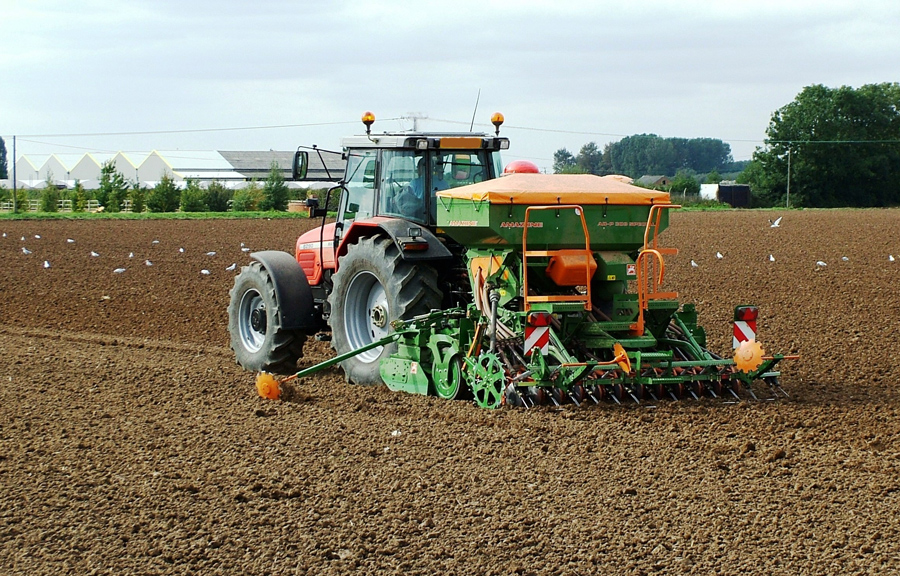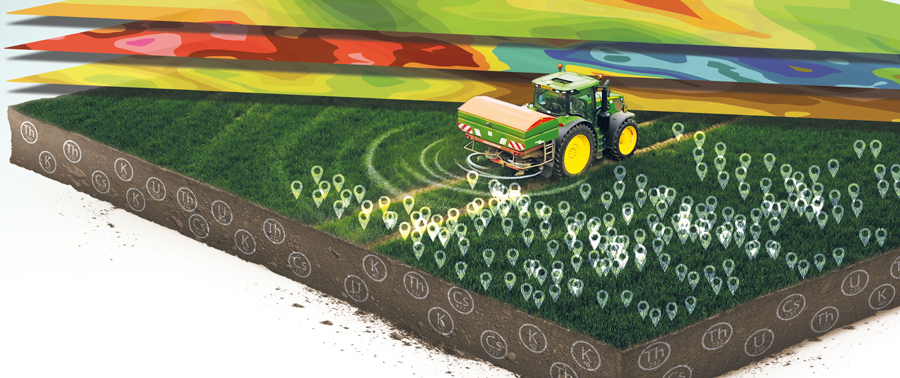Consider new technology to calculate accurate seed rates for variable rate drilling
23rd July 2019
Farmacy chairman Mike Young’s advice is to take the time now to consider how best to optimise variable rate inputs for this autumn, with new technology such as TerraMap offering a genuine opportunity to enhance the benefits of precision agronomy.

Farmacy chairman Mike Young’s advice is to take the time now to consider how best to optimise variable rate inputs for this autumn, with new technology such as TerraMap offering a genuine opportunity to enhance the benefits of precision agronomy.
He highlights the results of Farmacy trials across the country this year which have demonstrated that the biggest yield responses from precision agronomy are likely to come from variable seed rates in both winter and spring combinable crops.
“We know that the yield potential for crops is set at the time of drilling and if the variable rate plans are not created from the most accurate soil type maps, the yield potential of a crop is already compromised before it is established,” he says.
Current GPS soil mapping systems use grid sampling and or electro magnetic (EMI) or conductivity scanners to assess soil properties into zones of similar character; samples are then drawn from each zone.
“These systems are definitely a step forward from whole field crop management, however they are by definition based upon averages and assumptions, which means that the information going into variable rate plans is not as accurate as it can now be.”
“These soil scanning techniques can be influenced by compaction and soil moisture so the picture that you get of your soil in the autumn is likely to be very different from a scan taken in the spring.”
“However, with the launch of the ground-breaking TerraMap soil scanning service earlier this spring, soil scanning and nutrient mapping can be carried out at far, far higher resolutions and are consistent regardless of time of year and moisture status of the soil.”
“TerraMap is a great leap forward in terms of the level of accuracy– in fact 800 times more accurate than any other current system; meaning that variable rate plans are much more likely to enable crops to realise their full yield potential.
This is because TerraMap uses completely different technology to assess soil properties, he says.
TerraMap uses passive, gamma-ray detection technology, taking more than 800 readings per hectare, providing much higher definition mapping of all common macro and micro nutrients, pH, soil texture, organic matter and CEC as well as elevation and plant available water.
It does all of this by measuring naturally emitted isotopes, such as Caesium and Potassium, that are very stable due to their extremely long half-lives.
“The significance of this methodology is that it is not affected by soil moisture, compaction, crop cover or cultivation state – unlike scanning or satellite systems.”
Mr Young points out that as a result, there are very few limitations to when TerraMap can be used – offering a much wider operating window.
The information from TerraMap can be used to create maps within Omnia. It can then be overlaid with yield potential, biomass and weed maps to create more meaningful data, which will result in much more accurate and consistent variable rate plans.
And significantly Mr Young adds that TerraMap is costed at comparable levels to other soil sampling and mapping systems.

Using Omnia, it is possible to input all of this information into the system to create the most accurate variable rate map possible, bringing about a more even establishment,” says Nick Strelczuk, precision technology specialist.
Maps can be created within Omnia for all of the necessary field and crop data and then matched to a target plant population for that variety, creating a detailed variable drilling plan.
In our validation trials last year, we proved the benefits of variable drilling by comparing variably drilled wheat alongside a farm standard rate on spilt fields and taking them to yield. The statistically-valid work proved that using Omnia Precision Agronomy can increase yields by an average of 0.6t/ha, worth £99/ha (based on wheat at £165/t).
We anticipate similar results from the 20 winter wheat and spring barley validation trials in the ground this year, ranging from Scotland to Kent, he says.
“So far, it’s very clear to see the variably drilled plots are much more uniform and even in terms of tiller and ear numbers. If we work on the Yield Enhancement Network (YEN) premise of more biomass and ear numbers leading to higher yields, its certainly looking hopeful for a good harvest result.”
